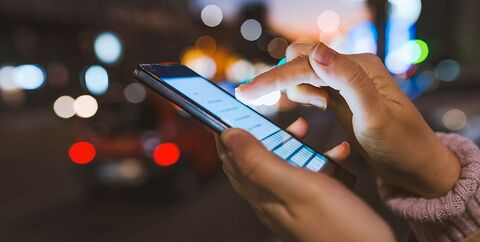Here’s why Twitter’s chronological timeline is good for brands
In 2016, Twitter did something drastic: they introduced an algorithm. After years of a reverse chronological timeline (RCT) showing the most recent tweets at the top of feeds, Twitter shuffled tweets according to what its algorithm determined would be most relevant to each individual user. Since this was launched, users have been begging for the RCT to return.
In September, Twitter made this announcement:
5/ Meanwhile, today we updated the “Show the best Tweets first” setting. When off, you’ll only see Tweets from people you follow in reverse chronological order. Previously when turned off, you’d also see “In case you missed it” and recommended Tweets from people you don’t follow.
— Twitter Support (@TwitterSupport) September 17, 2018
In other words, the RCT is back. Twitter tried to go down the algorithm route following Facebook’s news feed changes, but the added value of Twitter’s time-focused content ranking has finally been recognised.
Now, Twitter users can flick a switch to turn off the algorithm and then flick the switch to turn it on again if they want.
While this comes with both perks and challenges, the RCT will be a good thing for users and brands trying to start or join in on conversations.
Best times to post will be best
Peak traffic hours on social media - when the platform sees rise in activity from its users - overlaps, unsurprisingly, with rush-hour traffic. Early morning or after work commutes both see high levels of activity, as well as a small surge during midday - assumably lunch hour.
Within these peak traffic hours come the best opportunities for brands to gather impressions and engage their fans. Locations and activity trends will impact when the peak hours occur – Singapore’s peak hours will differ from London’s, same goes for 9-to-5 employees and those on the night shift. However, once the golden hour has been found, they can confidently post at those times.
The algorithmic timeline pushes us around
Despite Twitter’s insistence that the algorithm shows users the content that is most relevant to them, users have been opposing the algorithm because this “relevant” content often pushes out content from the accounts that a user follows. This includes content from brands.
But with the return of the RCT, the algorithm’s “relevant” content won’t replace content from accounts that a user follows. Rather, the user’s timeline will be full of content from accounts they enjoy, trust and have taken the time to follow. Following is a commitment after all and Twitter should reward that commitment.
People will now play catch-up
Because the RCT will push older tweets further down the timeline, and people have work and violin lessons and such, there will be lots of catching up to do for users who follow accounts that tweet throughout the day. To find all the tweets that accounts they follow have tweeted, users will spend more time scrolling down to make up for lost time.
This means that people will spend more time on Twitter which extends the peak hours and provides excellent opportunities for promoted tweets to find ad space. The more tweets that there are to scroll through, the more spots there are for advertisers to market for their clients or entertain audiences.
Engagement is truly engaging
While the most recent algorithmic timeline was dropping “relevant” content into users’ timelines, this often leads to a few tweets amassing hundreds of thousands of likes and retweets, starting a sort of snowball effect at the expense of other content.
The RCT will only drop tweets, RTs and tweets that have been liked by accounts that a user follows. This means that snowballed tweets with “relevant” content won’t crowd well-meaning tweets that haven’t yet had their chance to shine. Hopefully, engagement rates will look even for all tweets - assuming of course the content is top-notch.
And don’t forget the best times to post.
It’s simpler for users
This is probably the most important part of the RCT’s return. For ages it was confusing to understand where content in the timeline was coming from, which section of the timeline would come next and how we can find content from accounts we follow without going to each individual account to check what’s there. Tip of the iceberg no longer - now the whole ice shelf, so to speak, is on show.
Brands will benefit from this as users find Twitter’s platform easier to navigate and use it more often to stay up to date with trending conversations. All the technical chat about algorithms and timelines can also be for advertisers and social media managers to quarrel over, leaving more time for users and brands to get involved with the topics of the day.
We're a creative agency in London and Singapore. We help our clients break through the noise. We'd love to hear from you so do drop us a line
